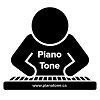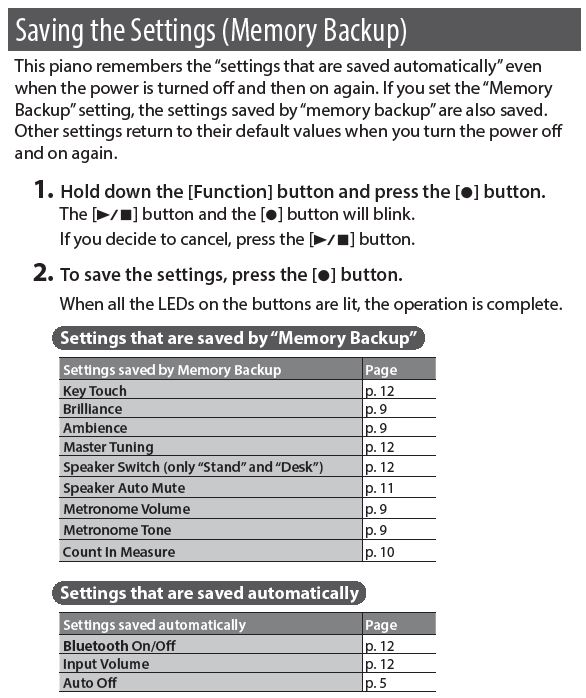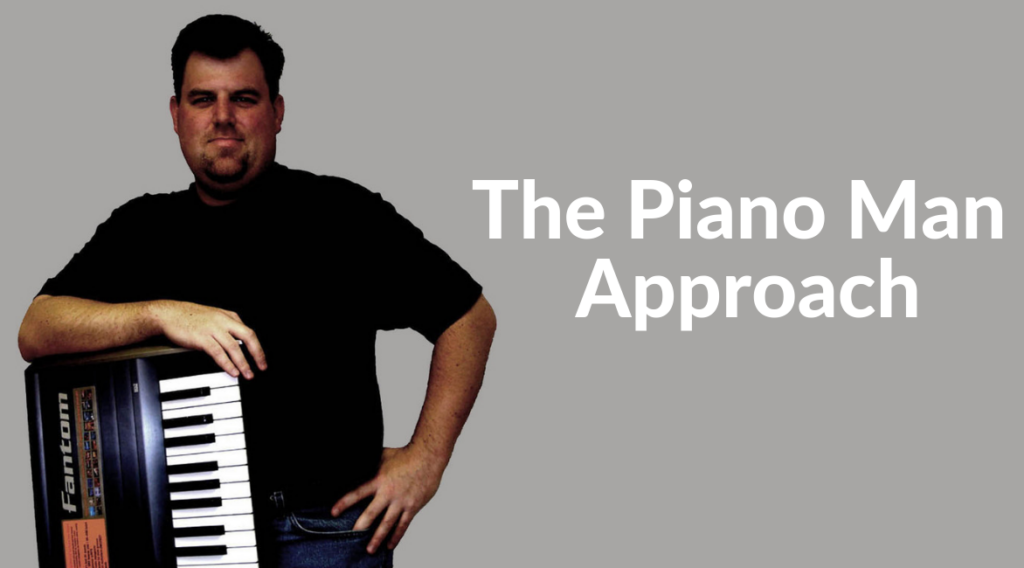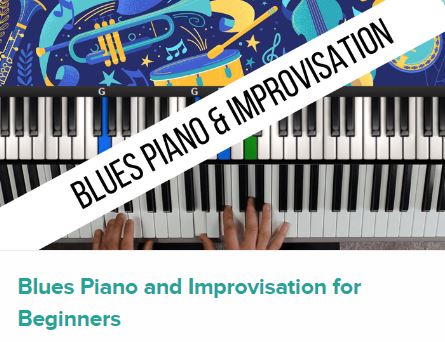This is my review on the Roland FP-30X digital piano. I actually owned the prior version, the FP-30 for a few months back in 2020 before trading it in on a Yamaha P-125. There were some things I really liked about the FP-30, and there were some things I really DIDN’T like, as well as some kind of important features that were just . . . missing – a lot of those negatives actually got addressed with the FP-30X, but . . . some of them didn’t. And my local store has started allowing rentals with their FP-30X’s so I thought it was time to actually check out the new version for myself, so I rented one . . . let’s check out the review.

User Interface
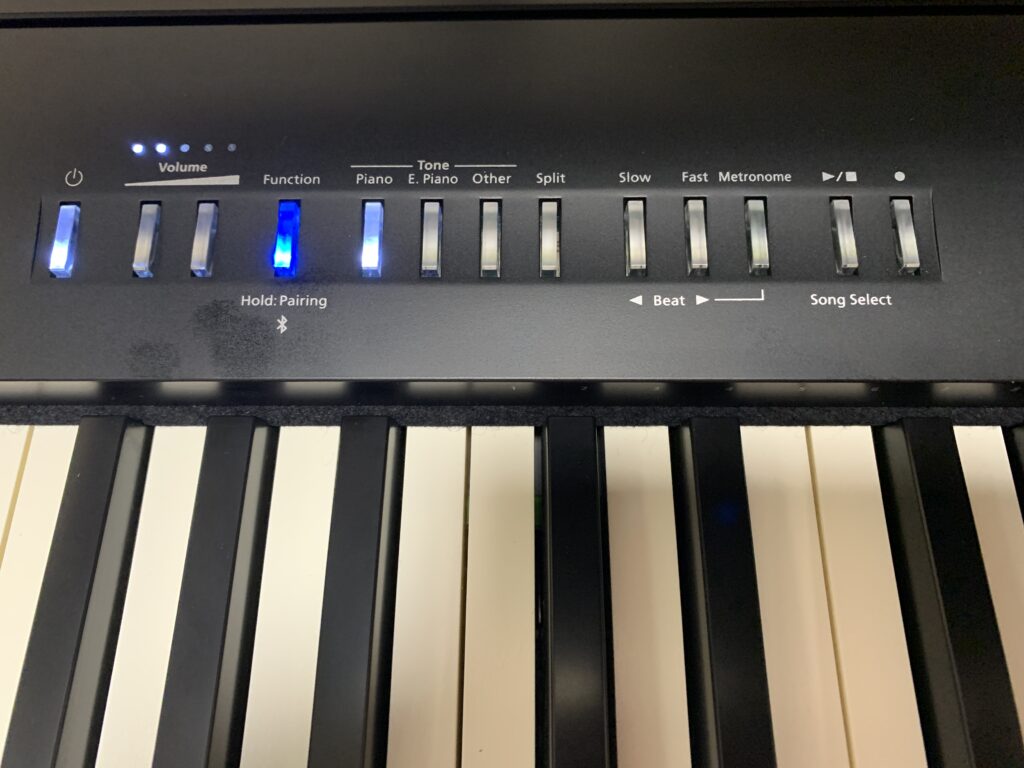
I wanted to talk about the user interface FIRST, because the user interface on the FP-30 (or lack thereof) was my single biggest negative about the FP-30, and unfortunately . . . Roland didn’t make ANY improvements to the user interface, so this is still a big issue with me (but to be totally honest, it might NOT be an issue at ALL for you). When I originally bought my FP-30 and reviewed it, I was still pretty new to the piano market, and didn’t get TOO negative about the user interface. But after buying, selling, renting and reviewing keyboards and pianos for the last few years, I’ve found that I have less and less tolerance for keyboards that make you look up function key combinations in a manual to configure settings, especially if you have to do that for COMMON settings like layering or splitting the piano.
And when you have to use key combinations just to select voices? (You hold down a category button like “Piano” and then press the piano key that corresponds with the voice you want – and keep in mind there are FIFTY SIX voices available). I’m definitely not a fan, especially on a piano like this that has more than just a small handful of voices.

And, since the voices are split into 3 category buttons, you are only able to layer one voice from each category (you can’t layer 2 voices from within the same category/button). And for splitting the keyboard into 2 tones, you have to hold down SPLIT, hold down the CATEGORY button you want, and THEN press the key for the tone you want in the left hand. At least the default left voice for splits is a good sounding bass guitar, so as long as you’re ok just using that voice in the left hand, you can get away with just pressing the split button.
Another issue with the user interface that I’m not a fan of is these volume up and down buttons;

these are just kind of clunky to use especially for trying to make fine adjustments to your volume, in comparison to a volume knob or a slider. And given that there are only 5 lit volume indicators, you actually have no idea looking at the display what your volume IS – there are actually 100 volume increments on the FP-30X.
And another side issue with all of this is that there is no way to just look at the piano and tell what voice or voices you have selected? In comparison, with my Yamaha P-125, I can quickly and easily make voice selections using lit buttons, turn on splits or layers, and see what my current choices are . . . just with a glance.

While setting up voices can be pretty time consuming with key combinations, there are (thankfully) a number of labelled keys that help you with some of the SETTINGS on the piano, which is a welcome addition; there are labelled keys for:
- Setting the input volume up and down to control the input volume of the BlueTooth or USB audio in
- Setting the metronome tempo
- Transposing up or down
- Turning twin piano on or off, which is the teacher mode that splits the piano into 2 identical octaves
- Adjusting the level of ambience which is reverb, or brilliance which is chorus
- Choosing your touch sensitivity level
- Tuning the piano up or down if you need to tune to an acoustic instrument
- Controlling the playback of songs on your flash drive
- Setting your speaker EQ choices
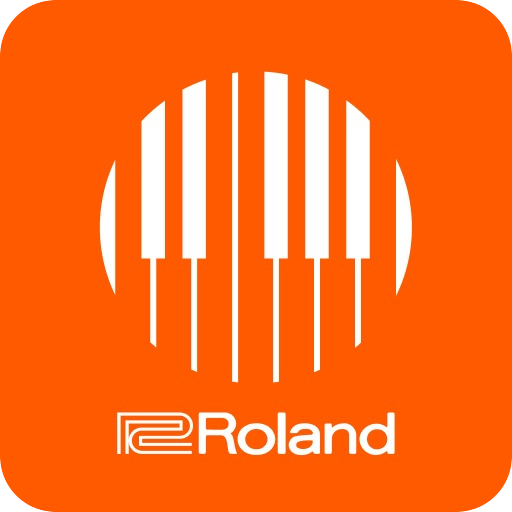
So because I have no interest in learning a bunch of key combinations for this review, I will be using the “Roland Piano App” on my iPad to select voices, and make other settings changes in my videos. This app has replaced the “Piano Every Day” app which was the original app released for the FP-30X. The FP-30 used an app called “Piano Partner 2” which was . . . an ok app. When I AM using the app within my videos I’ll try to include a screen capture so you can get . . . at least an idea of how that app functions.
So in trying not to be OVER critical of the user interface; if you’re just using the piano at home for fun, then I guess having to look up key combinations really isn’t the end of the world – in all fairness, when I had my FP-30 it didn’t bother me TOO much, so maybe I’m making too big of a deal about this.
But if you have any intention of using the FP-30X to busk or gig with? In my opinion, unless you’re just turning it on and only using one or two sounds, this user interface is NOT gonna cut it for performing live, you will definitely need to rely on the app; but . . . depending where you’re performing? The app may actually not even WORK so you’ll be FORCED to memorize key combinations anyways – more on that a bit later in the review when I go over the app.
Key Action
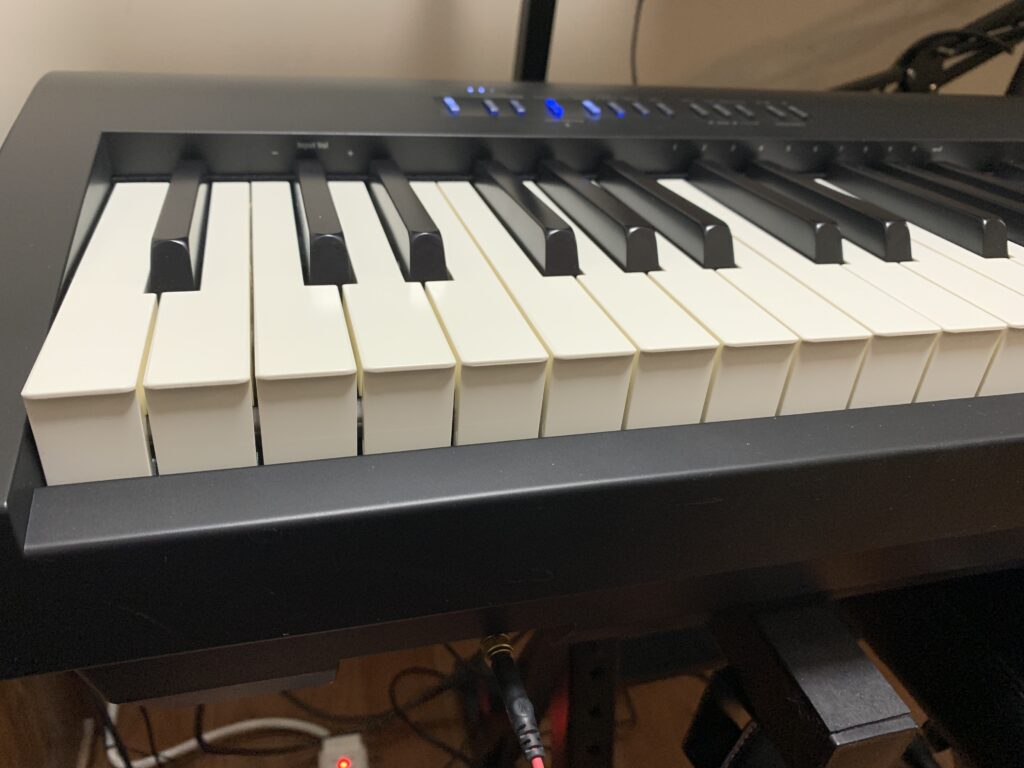
Ok so one of the highlights of the FP-30X without a doubt is the PHA4 key action. This is the same action as on the FP-30, it’s a triple sensor action with escapement; there is a matte faux ivory finish on the keys, and there are 5 levels of touch sensitivity + fixed. This is the same action you find in the less expensive FP-10, as well as the more expensive FP-60X and it’s one of the only triple sensor actions in this price range. So if you’re accustomed to playing acoustic pianos, then this action is going to feel more realistic than a dual sensor action like Yamaha’s GHS action, or Casio’s smart scaled hammer action.
That being said though, action is a very personal thing; some people prefer lighter actions, some people prefer heavier actions; neither one is right or wrong, it just comes down to personal preference. While I do like some things about Roland’s PHA4 action, MY personal preference is Yamaha’s GHS action; I just enjoy playing on it more. I find the Roland action to be heavier on the way down than Yamaha’s GHS, but I also find that keys seems to take longer to return back up than the Yamaha does; so if I’m playing something like slow blues then it’s fine, but if I try to play faster 50’s rock I find the combination of the keys being a bit heavier and taking a bit longer to return back up makes it . . . a bit more challenging and actually kind of tiring to play. Because I’m used to a lighter action, I’m using a touch sensitivity setting that is one lighter than the default of medium; this does help me hit my desired level of dynamic control, but … it doesn’t change the actual weight of the keys.
But all that being said, I also VERY rarely play on acoustic pianos, so to me, having an action that mimics an acoustic piano as close as possible . . . . doesn’t really matter. As far as whether you’ll like an action or not? The only way to really know is to go into a store and play a bunch of different actions and test them out for yourself.
The Voices
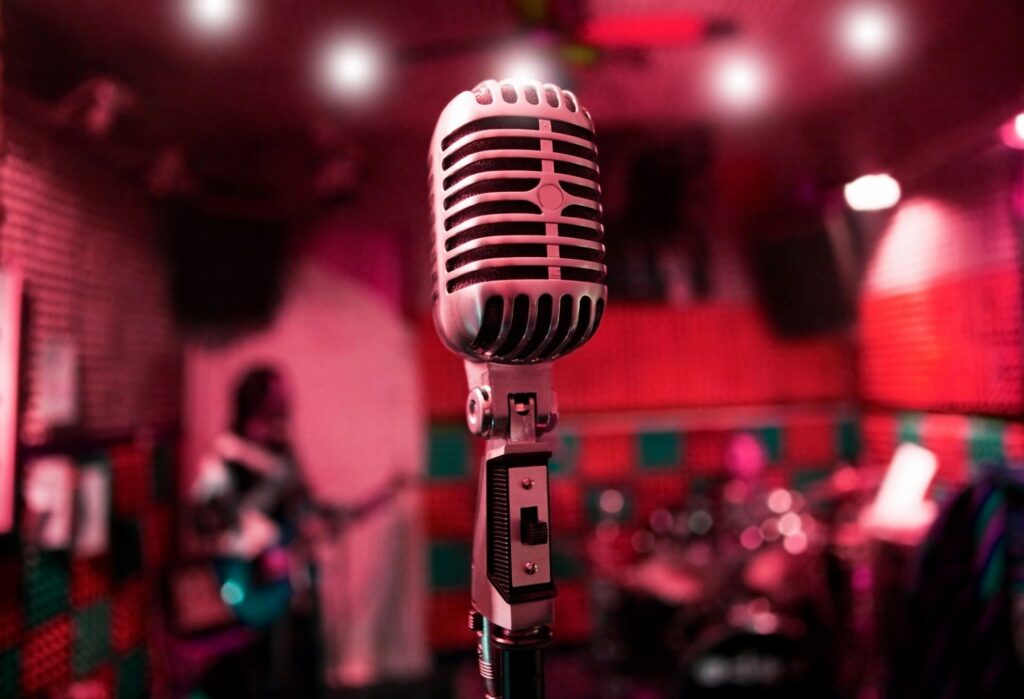
Ok so the voice SELECTION on the FP-30X is pretty similar to the FP-30, with a few added tones, it has 56 tones as opposed to 35. While both the FP-30 and FP-30X both use Roland’s Supernatural Sound modeling, the FP-30X is equipped with an updated sound chip that doubles the polyphony from 128 to 256.
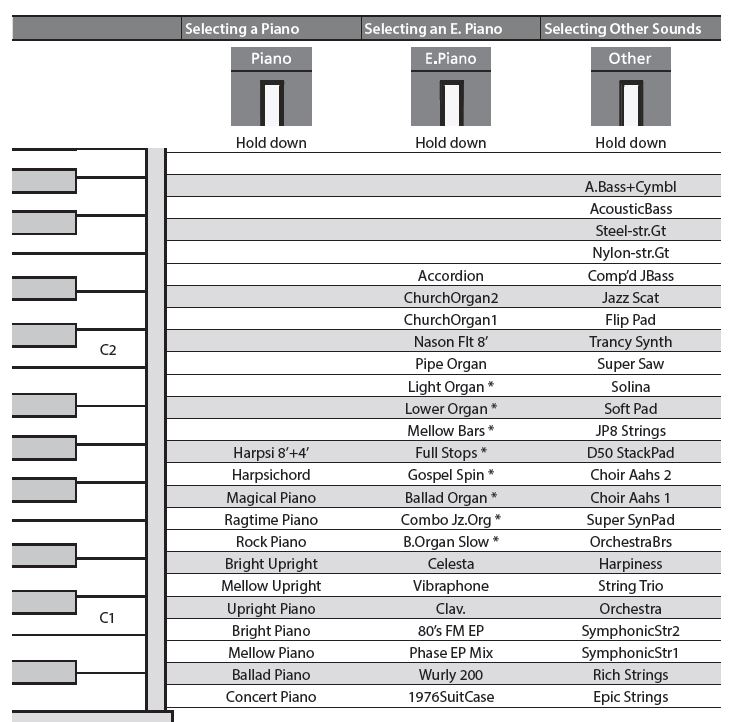
And this indicates more than just “you’ve got more polyphony”, it also indicates that this chip has more powerful processing available to enhance the sounds, and after testing the FP-30X out; it’s pretty clear that Roland has done exactly that.
It’s hard to put into words, and granted a lot of this is from memory, and from me watching my old videos on the FP-30, but it just seems that in general, most of the voices (but in particular the piano and electric piano voices) have noticeably more resonance, warmth, nuance and detail than on the FP-30. Now I should also mention that when you’re connected to Roland’s Piano App, that you also have access to a bank of 127 MIDI sounds; these are not as advanced as the onboard sounds, but I will demo ONE piano from that area just so you can compare it to the FAR better Supernatural piano sounds.
So here’s a demo of some of the main sounds on the FP-30X, focusing on the pianos; I’ll include some split and layer demos as well, including modifying relative volumes, and shifting octaves.
So while piano sounds are really personal – one person is bound to like Roland’s sounds better than Yamaha’s or Casio’s and vice versa, there really is no denying the fact the sounds on the FP-30X ESPECIALLY THE CONCERT PIANO . . . really are pretty amazing.
Effects

Ok so for effects, the Roland FP-30X has 10 levels of ambience which is just reverb, and for brilliance which is chorus you can adjust that up 1 from 0 to brighten a tone or down 1 from 0 to unbrighten a tone.
Now note that you can also go WAY deeper into customizing your piano sounds because the FP-30X is compatible with the Piano Designer app from Roland, which works on a lot of their higher end pianos. This app allows you to really dig into tweaking your piano sounds by adjusting various resonances, custom tunings, all sorts of stuff. Now I won’t be going over any of that in THIS video, but one important thing to note though is that you cannot make any of those changes on the piano itself; you can ONLY do this on the Piano Designer app.
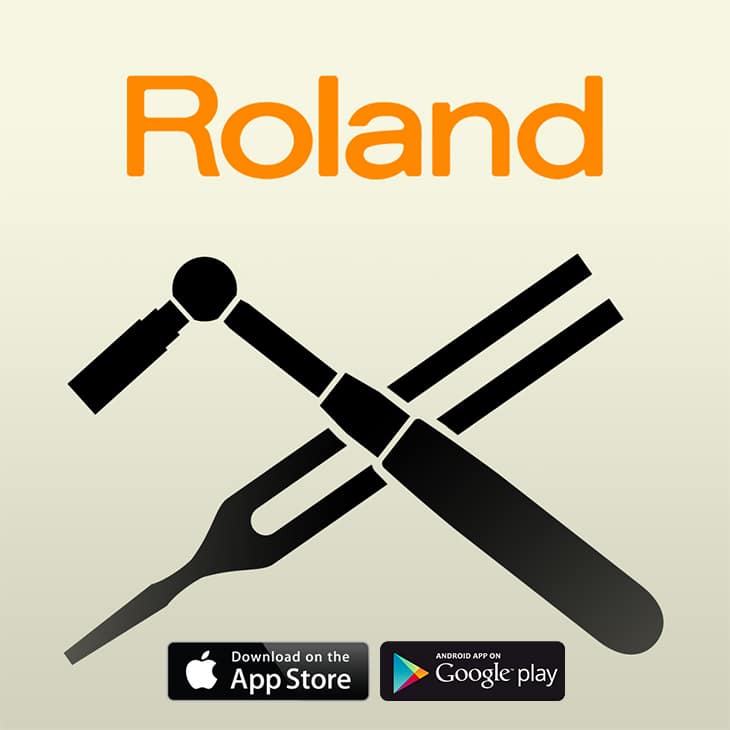
Connectivity

Ok for connectivity, Roland made some really good improvements in almost every area over the FP-30, so I’m pretty impressed here; first I’ll mention the connectivity items that DIDN’T see an upgrade:
- As with the FP-30, the 30X has 2 headphone ports on the front of the piano, and a nice touch here from Roland is that you have an 1/8” and a ¼” port so regardless of your headphone type, you won’t need an adapter
- Also the same as with the FP-30, there is a generic ¼” sustain pedal port, and an included cheap plastic brick switch style sustain pedal
- There is also a port for Roland’s optional triple pedal unit. I would highly recommend upgrading to either the triple pedal unit or at least Roland’s DP-10 sustain pedal which supports half pedaling

Ok so now for all the cool NEW connectivity stuff!
- Roland added proper 1/4 “ L/R line outs:
- for connecting to external audio equipment like amps, PA systems, mixers or audio interfaces; these are NEW on the FP-30X; with the FP-30 you had to use the headphone port which is not only a lower quality signal, but also mutes the speakers, so this is a big addition
- Bluetooth:
- The FP-30 only had BlueTooth MIDI, not audio, and to be honest in my opinion, Bluetooth MIDI is always too laggy to be of much use. But on the FP-30X, Roland not only still has BlueTooth MIDI (if you do want to use it), but the FP-30X now has BlueTooth audio IN – this is awesome, because now you can use this to stream audio from a device into the piano, so you can play along with backing tracks, YouTube, etc. And an important note is that Roland also upgraded their BlueTooth technology; the Bluetooth connection on the FP-30 was pretty slow and kind of flaky; it would often disconnect, but this was SUPPOSEDY improved on the FP-30X – in my testing, the Bluetooth AUDIO seemed pretty stable, but, just like with the FP-30, my BlueTooth connection to the APP (which is MIDI) would magically disconnect me on a regular basis (this is why I always use a cable for MIDI)
- USB Flash Drive
- You can play back WAV or MP3 files from a flash drive; the FP-30 was wav only; I remember testing this on my FP30 and having issues getting it to work; it works great on the FP-30X!
- USB to host (OK this is a BIG ONE) on the FP-30X, the USB to host port transmits BOTH MIDI AND Audio (the FP-30 was MIDI only)
- This is a MASSIVE addition and this adds some very valuable functionality:
- You can stream audio IN to the piano from a device just using a USB cable (this is an alternative to using the BlueTooth audio in); this allows you to play along with YouTube or backing tracks on a device, AND it ALSO allows you to hear MIDI sounds from a sound library on your device THROUGH YOUR PIANO’S SPEAKERS
- SOMETHING TO NOTE THOUGH: If you ARE going to use a USB cable as an audio in source? BE VERY CAREFUL WITH YOUR VOLUME! I have NO IDEA WHY Roland did this, but when I connect my iPad to the FP-30X using the USB cable; I lose the ability to change the volume on my iPad!!!! I have never seen any other keyboard do this! And, this actually caught me off guard and almost hurt my ears; I connected the iPad, started playing a backing track, and it was insanely loud so I quickly tried to adjust the volume on my iPad, and it didn’t work! So I quickly took off my headphones, and then figured out that when you are connected with the USB cable, you adjust the incoming audio volume with . . . you guessed it . . . FUNCTION KEY COMBINATIONS! The only reason I figured this out is the keys that do this happen to be labelled down here at the left side of the keyboard.
In contrast, when I use BlueTooth audio to stream audio into the device, I DO still get to adjust volume using my iPad, and I can ALSO edit that volume further with these function keys; once again… no idea why Roland did this
- SOMETHING TO NOTE THOUGH: If you ARE going to use a USB cable as an audio in source? BE VERY CAREFUL WITH YOUR VOLUME! I have NO IDEA WHY Roland did this, but when I connect my iPad to the FP-30X using the USB cable; I lose the ability to change the volume on my iPad!!!! I have never seen any other keyboard do this! And, this actually caught me off guard and almost hurt my ears; I connected the iPad, started playing a backing track, and it was insanely loud so I quickly tried to adjust the volume on my iPad, and it didn’t work! So I quickly took off my headphones, and then figured out that when you are connected with the USB cable, you adjust the incoming audio volume with . . . you guessed it . . . FUNCTION KEY COMBINATIONS! The only reason I figured this out is the keys that do this happen to be labelled down here at the left side of the keyboard.
- Now the other HUGE benefit of the built in audio interface is that you can stream audio OUT of your piano direct to a device to use in audio recording software like a DAW, OR to easily create high quality performance videos with direct audio with just a USB cable and your smart phone! Without this feature, to create a performance video you would ALSO need some audio cables and an external audio interface like a Focusrite Scarlett
- You can stream audio IN to the piano from a device just using a USB cable (this is an alternative to using the BlueTooth audio in); this allows you to play along with YouTube or backing tracks on a device, AND it ALSO allows you to hear MIDI sounds from a sound library on your device THROUGH YOUR PIANO’S SPEAKERS
- This is a MASSIVE addition and this adds some very valuable functionality:
Speakers

So just like the FP-30, the speakers on the FP-30X are 2 x 12 cm, 11 watt downward facing speakers; one notable addition to the FP-30X though, is the addition of 3 speaker options:
- off all the time
- “Stand” for when the keyboard is on a stand where the downward facing speakers are exposed
- “Desk” option that is meant to optimize the sound (I’m assuming just EQ’ing it differently), while on a desk to minimize any muffling issues.
So for my demo, the piano is on a stand where the speakers ARE exposed; I’ll do a quick demo of the speakers just as picked up by my iPhone’s built in mic, and I will include both the Stand and Desk versions just to see if there’s any difference (a better test for the desk version would be to do this on a table, but I don’t have one handy that’s big enough for the piano, so this will have to do).
I have to admit, while I would prefer upward facing speakers, these speakers do sound REALLY good. If Roland were to add a couple of upward facing ones or even find a way to have some upward facing ports it might even be better. You could definitely hear a lot more high end with the “Desk” setting, but the low end might suffer a bit – to be honest I’m not sure if i would use that or not if I owned an FP-30X, but it’s a great option to have.
Registrations? (Well . . . no, but . . .)
Just like the FP-30, the FP-30X does NOT give you the ability to save your custom setups as a registration; given that the user interface is so minimal, this is really a shame. Now there is the ability to save some SETTINGS as defaults so they are set when you turn the piano on, but this isn’t really a registration (but it is a nice thing to have).
The settings that get saved (and how to do it) is shown in this part of the manual:
Recording
There is a simple onboard MIDI recorder – you can hit the record button, and record your playing, and play it back and play along with it, etc. This is handy & useful for quickly capturing an idea, but for actual use in music production, it’s not very useful; to do that properly, you’ll want to connect your piano to a device running some DAW software like Garageband on an iPad. There is a BIT more MIDI recording functionality available within the Roland Piano App which I’m going to go over in the next part of the review.
And also note that there is no way to record AUDIO on the FP-30X, only MIDI. Once again though, given that the FP-30X has been upgraded with a built in audio interface, you can EASILY record audio by once again connecting your piano to a device, just using a USB cable (no external audio interface is required).
Apps & Other Features

OK so I already mentioned the Piano Designer app for deep diving into customizing your piano sounds, and I’ve included screen captures of the “Roland Piano App” as I’ve been using it in videos during this review, just to give you a sense of what it looks like. I’ll just quickly show you a couple more sections of the app so that you can see what kind of additional functionality it adds to your experience with the FP-30X.
One more minor thing to mention about this app; there are no registrations built in which is a letdown given that there are no onboard registrations with the FP-30X. Yamaha’s Smart Pianist app has unlimited registrations, and even Casio’s Music Space lets you save a couple. But a MAJOR issue to mention with this app, and it is a HUGE ISSUE! The app does not work if you are not connected to the internet! I have no idea why Roland did this, but given that the onboard user interface is . . . pretty barren, in my opinion, you really need the app to be functional, ESPECIALLY If you are intending to use the FP-30X to busk or gig with so you can choose voices and settings easily.
Given that you need an internet connection to even open the app? That means if you’re performing in a location where there is no internet, you’re going to have to use DATA . . . just to control your piano . . . I can understand why some functionality of the app might need an internet connection, but for controlling your piano, selecting sounds, etc. . . Have to say, I’m not impressed with that, I hope Roland deals with this issue.
Summary & Other Choices
I have to admit, I am VERY torn in how to sum up my opinion on the Roland FP-30X; there are some things that are over the top fantastic about it, and there are some things I REALLY don’t like. So to sum up my thoughts on the FP-30X, here are my PROs and CONs
PROs:
- Piano Sounds: they are SPECTACULAR!
- PHA4 Action: the only triple sensor in this price range (IF YOU WANT a heavier more “acoustic piano like” feel; not everybody does)
- Connectivity: the addition of LR line outs, a built in audio interface and Bluetooth audio
CONs:
- User Interface: Having to use function key combinations for pretty much everything INCLUDING CHOOSING VOICES I find pretty frustrating
- Roland Piano App: I knew before renting the FP-30X that the user interface hadn’t changed from the FP-30, but I had high hopes that this new app would alleviate my frustration with the user interface, but to be honest, I would prefer the original Piano Partner 2 app over the new one; the navigation and menus were far more intuitive and easier to use; this new app is slow to respond and the navigation and menus could REALLY use a facelift; but the BIG issue with this app? The fact that it REQUIRES an internet connection to work.
Ok so I’ll quickly compare the FP-30X to some other choices, but I DO need to mention a strange pricing issue between the USA and Canada – every piano that I’m about to mention below (including other Roland products) sell for about the same in the USA and Canada when you take current exchange rates into account – except for the Roland FP-30X; I have NO idea WHY this is the case, but even after taking exchange into account, the FP-30X sells for about 20% higher in Canada! The current price in the US is about $800 USD, so at current exchange rates that should be about $1060 CDN; but the FP-30X sells for $1260 in Canada (which is more expensive than my Yamaha DGX 670 which is . . . crazy). So the prices listed below assume you’re in the US, so please keep that in mind.
The Other Choices
Roland FP-30X ($800USD) vs. Roland FP-10 ($600USD)
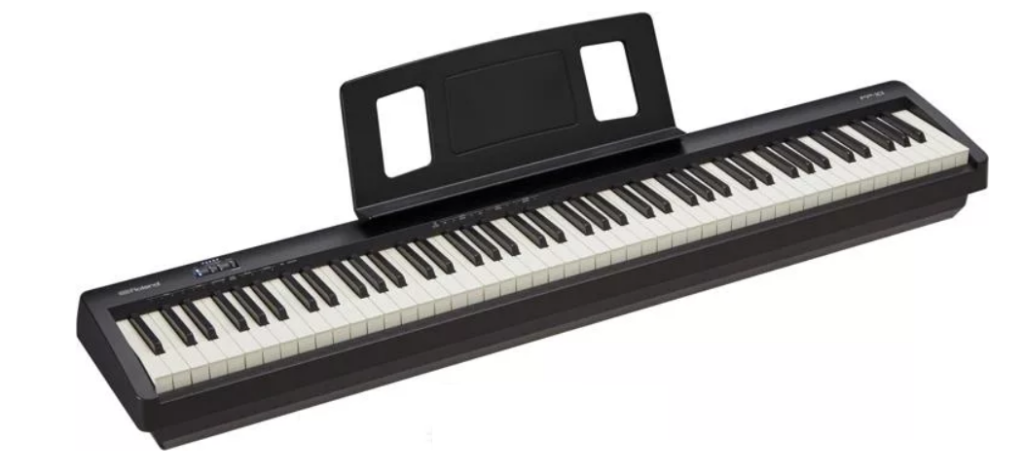
The FP-30X has more sounds, an improved processor (so the sounds ARE improved) it has LR line outs and a built-in audio interface; that’s a LOT of extra features for only $200USD; but . . . if all you want to do is just sit down and play piano, the FP-10 DOES have the same action so that might be enough for you, and can save you some money.
Roland FP-30X ($800USD) vs. Casio PX-S1100 ($700)

The Casio PX-S1100 has fewer sounds, and the Roland piano sounds are probably a bit better quality; the big difference here would be the action – the Casio action is VERY light in comparison to the Roland, so the Roland is much more “acoustic piano like” (which you may or may not prefer), and the Roland has the built in audio interface. They both have “not very good” user interfaces that rely heavily on function key combinations, and the apps for both pianos really aren’t the greatest, but the Casio does have a couple of things in ITS favour; it is SUPER light at around 25 lbs, and it can run on batteries.
Roland FP-30X ($800USD) vs. Yamaha P-125 or P-125A ($700USD)
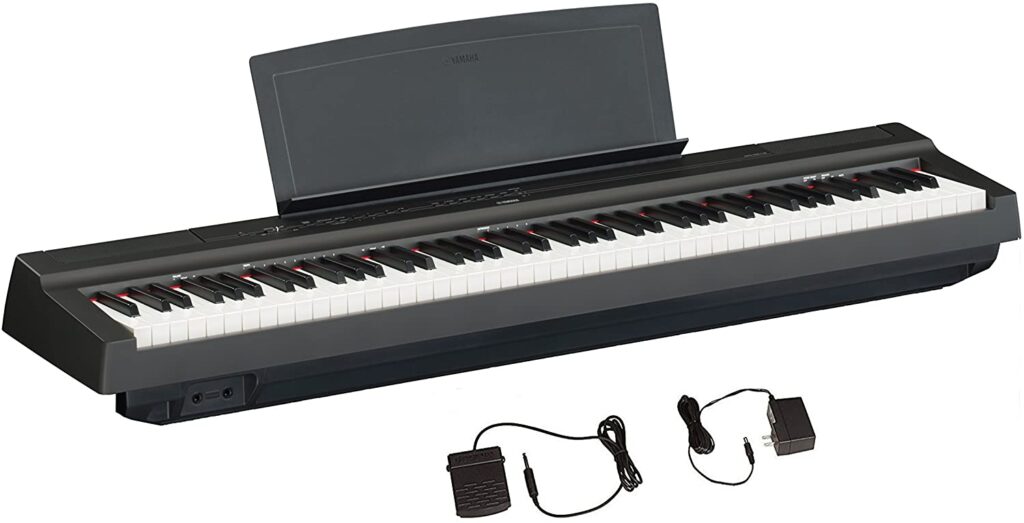
As with the Casio, the Roland has more sounds, and the piano sounds are going to be more advanced than the P-125 or P-125a; and once again the action on the Roland is a bit heavier and more “acoustic piano like” (which you may or may not prefer), but the HUGE difference here for me is the user interface; the P-125 and 125a’s simple & intuitive button driven user interface is fantastic; as I mentioned before it is SUPER easy to select voices, layers and splits, and you just have to glance at the panel to instantly know what your current choices are. And the P-125 and 125a also have rhythms you can practice with on the piano itself instead of within an app; and for more complex setting changes and setups, Yamaha’s Smart Pianist app is light years better than the Roland Piano App.
Now do note that the P-125 has been discontinued and hopefully just temporarily replaced with the P-125a; this is exactly the same piano, except the audio interface has been removed from the P-125a, so that means you can no longer stream audio in or out of the piano on the USB port which IS a huge loss!
Piano Tone’s PERSONAL Ranking:
So even if I totally IGNORE price differences, how would I rank these 4 pianos as far as meeting MY needs (which I do realize are not necessarily YOUR needs):
- Yamaha P-125
- Yamaha P-125a (yes even without the audio interface I would rather have that piano that the next 2; it still has the awesome user interface, rhythms and MOST of the functionality of Smart Pianist; I would need an external audio interface and mixer to regain the lost functionality)
- Casio PX-S1100 (I’d rank this above the FP-30X because while it also has a poor user interface, the action is lighter and more to my liking; to me that’s more important than slightly higher quality sound engine, and you have the added benefit of running on batteries)
- Roland FP-30X
What If Your Needs Are NOT The Same As Mine?
But what if your needs are NOT the same as mine and YOU actually DO want Roland’s heavier more realistic piano action, and their Supernatural sound engine? Then if you’re ok with the user interface issues, your list should have the FP-30X at the top!
But what if you would ALSO really like to have a better user interface experience? Well the next piano in their FP line is the Roland FP-60X; that piano actually has a fantastic user interface with lots of quick access buttons, an LCD screen, and it even has a mic in port; but . . . it is quite a bit more money at $1250 USD.

BUT – There just might be a new option coming out soon!
The just announced (at the time of this review in early 2023):
Roland FP-E50 Digital Arranger Piano

This new piano looks to be selling for $1000USD, so it’s cheaper than the FP-60X, and $200USD more than the FP-30X; BUT . . . the feature set announced so far looks to be . . . off the charts! I will probably do a preliminary review on the specs pretty soon, but this piano offers:
- The same PHA4 fully weighted action
- Over 1000 sounds, using TWO sound engines – the Supernatural sound engine, as well as Roland’s EXPANDABLE Zen-Core sound engine which is used on their Fantom synthesizers
- It has probably one of the best and most unique user interfaces I’ve ever seen; there are tons of quick access buttons and a screen, there are even slider controls to easily adjust relative layer volumes!
- There is a built in mic input that not only has effects, but VOCAL HARMONIES and a vocoder!
- It is also a full featured arranger keyboard with the usual arranger features, BUT you can also pre-program CHORD progressions and get the accompaniment to play them for you which frees both your hands up to just play along!
- And it has LR line outs, and a built in audio interface
All of THAT for only $200 USD more than the FP-30X, and $250 LESS than the FP-60X? I know I haven’t actually seen one of these yet, but I have a feeling the FP-E50 is going to do EXTREMELY well; I guess we’ll have to wait and see!
The Verdict

So anyways, that pretty much rounds out my review on the Roland FP-30X, I hope you found this review to be helpful. The FP-30X has absolutely spectacular piano sounds, a heavier acoustic piano like action and awesome connectivity, but the user interface really isn’t the greatest; so depending on what you’re looking for, it may be the perfect piano for you? Or maybe not.
There are links below if you want to check out current prices from Amazon in YOUR area on the FP-30X or any of the other pianos I mentioned in this review, and I’ve also left some links to some online piano training that I recommend.
Thanks so much, and happy piano playing! (and piano shopping 😉 )
I have included links below to Amazon so that you can check current pricing – please note that as an Amazon Associate I earn from qualifying purchases
Yamaha P-125 (look carefully to make sure it’s not a P-125A)
If you have any questions about my experience with the Roland FP-30X please feel free to contact me!
Piano Training I Recommend
If you are looking for an app or a course to get started on learning piano, I would highly recommend checking out one of the online courses I’ve taken (one I’m still taking) and had tons of success with: The Piano Man Approach, PianoForAll and any course from Bird’s Piano Academy (I’ve taken a couple blues courses).
